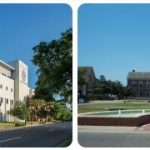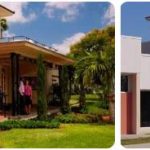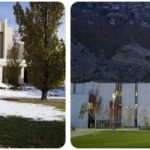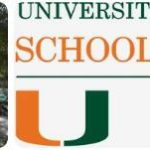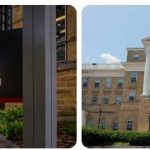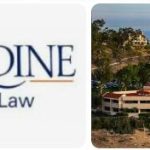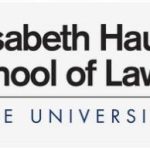University at Buffalo–SUNY Law School has a long and distinguished history of providing quality legal education to the people of New York. Established in 1887, it is the oldest public law school in the state. The law school was originally established as a private institution, known as the Law Department at University of Buffalo. In 1962, it became part of the State University of New York (SUNY) system and was renamed University at Buffalo–SUNY Law School. Since then, it has grown to become one of the top law schools in the country with a strong reputation for excellence in teaching and research. The faculty members are highly respected scholars who bring their expertise to bear on a wide range of legal topics. The school offers an extensive curriculum that covers all areas of law, including business, international law, civil rights, environmental law and more. In addition to its academic offerings, UB–SUNY Law School also has an active clinical program that allows students to gain practical experience by working with clients on real-world legal problems. This program gives students an opportunity to hone their skills under the supervision of experienced attorneys while gaining valuable hands-on experience in a real-world setting.
University at Buffalo–SUNY Law School is located in the state of New York. As one of the leading law programs, University at Buffalo–SUNY Law School has a high average LSAT score of 153-159 when recruiting new students. As a return, the median starting salary for law graduates reaches $75,000 per year. See the following table for detailed admissions information and career profiles of University at Buffalo–SUNY Law School.
Admissions: University at Buffalo–SUNY
The University at Buffalo–SUNY Law School is a top-tier law school that is highly sought after by applicants. In the 2020-2021 admissions cycle, the Law School received 6,890 applications and offered admission to 839 students. The admitted class of 2024 had an average GPA of 3.7 and an average LSAT score of 163, which is in the 84th percentile nationally. Out of the admitted class, 48% were female and 32% were from underrepresented minority groups. Additionally, 33% of enrolled students were from outside New York State and 4% were international students. The Law School also offers a variety of scholarships to its incoming class, including merit scholarships based on academic credentials and need-based grants for those with demonstrated financial need.
| Fall 2019 Admissions and Enrollment Statistics | |
|---|---|
| Total number of full- and part-time applicants | 2,104 |
| Total number of full- and part-time acceptances | 678 |
| Overall acceptance rate | 32.2% |
| Total number of full- and part-time first-year students enrolled | 208 |
| Number of full-time program applicants | 2,104 |
| Number of full-time program acceptances | 678 |
| Full-time acceptance rate | 32.2% |
| Number of first-year full-time students enrolled | 208 |
| Number of part-time program applicants | N/A |
| Number of part-time program acceptances | N/A |
| Part-time acceptance rate | N/A |
| Number of first-year part-time students enrolled | N/A |
| Fall 2019 GPA and LSAT Scores | |
| 25th-75th percentile GPA scores for all students | 3.19-3.73 |
| 25th-75th percentile LSAT scores for all students | 153-159 |
| 25th-75th percentile undergraduate GPA for full-time students | 3.19-3.73 |
| 25th-75th percentile LSAT scores for full-time students | 153-159 |
| 25th-75th percentile undergraduate GPA for part-time students | N/A |
| 25th-75th percentile LSAT scores for part-time students | N/A |
Careers: University at Buffalo–SUNY
| Bar Statistics (Winter and Summer 2018 administrations) | |
|---|---|
| State where the greatest number of first-time test takers took the bar | NY |
| School’s bar passage rate for first-time test takers | 81.2% |
| Statewide bar passage rate for first-time test takers | 80.7% |
| Class of 2018 Graduates | |
| Total graduates | 233 |
| Graduates employed at graduation | 75.6% |
| Graduates known to be employed nine months after graduation | 91.2% |
| Starting Salaries of 2018 Graduates Employed Full-time | |
| 25th percentile private sector starting salary | $55,000 |
| Median private sector starting salary | $75,000 |
| 75th percentile private sector starting salary | $160,000 |
| Percent in the private sector who reported salary information | 46% |
| Median public service starting salary | $55,000 |
| Areas of Legal Practice (Class of 2018) | |
| Percent employed in academia | 4.1% |
| Percent employed in business and industry | 11.1% |
| Percent employed in government | 10.6% |
| Percent employed in all judicial clerkships | 4.5% |
| Percent employed in law firms | 61.1% |
| Percent employed in public interest | 7.1% |
| Percent employed in an unknown field | 1.5% |
| Percent employed in a judicial clerkship by an Article III federal judge | 0.5% |
| 2018 Graduates Employment Location | |
| Graduates employed in-state | 82% |
| Graduates employed in foreign countries | 0.5% |
| Number of states where graduates are employed | 20 |
| New England (CT, ME, MA, NH, RI, VT) | 2.0% |
| Middle Atlantic (NY, NJ, PA) | 83.3% |
| East North Central (IL, IN, MI, OH, WI) | 1.0% |
| West North Central (IA, KS, MN, MO, NE, ND, SD) | 0.5% |
| South Atlantic (DE, DC, FL, GA, MD, NC, SC, VA, WV) | 4.5% |
| East South Central (AL, KY, MS, TN) | 0.0% |
| West South Central (AR, LA, OK, TX) | 1.0% |
| Pacific (AK, CA, HI, OR, WA) | 2.5% |
| Mountain (AZ, CO, ID, MT, NV, NM, UT, WY) | 0.5% |
| Employment location unknown | 4.0% |
| Career Services | |
| (Data appear as originally submitted by this school) | |
| Career services operations | Extensive individual counseling; on-campus, NYC and Washington recruiting programs; over 1,200 national and international jobs posted annually; national career network alumni program; summer public interest fellowships; first-rate career panels and training sessions (interviewing, networking, resume, etc.); judicial clerkship program; outstanding career library and on-line resources. |
| Job Type | |
| Bar admission required or anticipated (e.g., attorney and corporate counsel positions, law clerks, judicial clerks) | 80.1% |
| J.D. preferred, law degree enhances position (e.g., corporate contracts administrator, alternative dispute resolution specialist, government regulatory analyst, FBI special agent) | 10.1% |
| Professional/other (jobs that require professional skills or training but for which a J.D. is neither preferred nor particularly applicable; e.g., accountant, teacher, business manager, nurse) | 3.5% |
| Nonprofessional/other (job that does not require any professional skills or training or is taken on a temporary basis and not viewed as part of a career path) | 0.5% |


